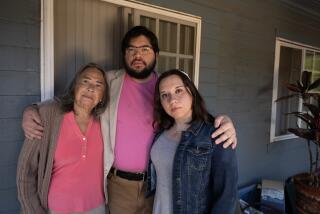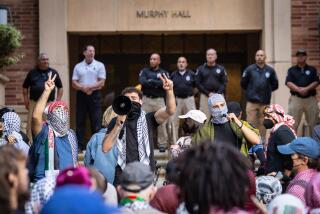Bradley May Support Street Scene if Changes Are Made
- Share via
Mayor Tom Bradley, who last fall called for the abolition of Los Angeles’ violence-plagued Street Scene, will probably drop his opposition if organizers of the annual festival accept a number of tight restrictions on alcohol, music and admittance, the mayor’s top deputy said Friday.
Deputy Mayor Tom Houston said that a new city staff analysis of the Street Scene, which concluded that the event “is not inherently violent,” contains recommendations that deal with “most of the mayor’s concerns.”
Bradley was in Honolulu at a conference of mayors and not available for comment Friday.
The report, written by City Administrative Officer Keith Comrie and city Chief Legislative Analyst William R. McCarley, was requested by the City Council in September after the city’s ninth annual Street Scene--organized as a tribute to the city’s cultural diversity and featuring scores of food booths and musical acts--was tarnished by death and injuries.
One person was fatally shot, at least 40 others were injured and 35 more people were arrested during the two-day event, which drew about 1 million people to the Civic Center.
For years, the Street Scene has drawn criticism from Los Angeles police, who have had to grapple with a small core of rowdy and sometimes drunk music fans drawn by highly amplified bands variously described as “punk,” “glam” or “new wave.”
The recommendations, which the report said have the support of the General Services Department, which organizes the Street Scene, proposed:
- Shutting down the activities at 7:30 p.m., several hours earlier than in the past. Most violence has occurred after dark.
- Placing a fence around the 14-block Street Scene area and creating specified entrances, as opposed to the traditional “walk-in” atmosphere. This will allow police to stop people from bringing in alcohol and drugs, a practice that “has not been strictly controlled.”
- Limiting sales of beer and wine to three or four beer garden-like locations and stopping the sale an hour before activities end.
- Emphasizing “family oriented” musical entertainment and restricting rock music--for years the staple of Street Scene entertainment--to the “mainstream” variety.
A final decision on the future of the Street Scene will probably be made by the City Council during discussion of the fiscal 1987-88 budget.
Houston said the city advances Street Scene organizers some of the money for the event’s $700,000 budget and is later reimbursed. The festival is funded through corporate sponsors, about half of them alcoholic beverage companies.
In September, the majority of City Council members took issue with Bradley’s proposal to ban the Street Scene and suggested reforms similar to the new report. Houston said Bradley remains “open” to modifications.
The call for only “mainstream” rock at the Street Scene may cause some head-scratching over semantics. Street Scene organizers made a first stab at toning down the event last year by declaring that they would not schedule punk-rock artists or other bands that attracted unsavory or violence-prone fans.
However, a large number of loud bands were booked and skirmishes involving young adults erupted both nights. On the first night, 25 people were arrested in an altercation that broke out after a band did not show up. The band, the Ramones, was not scheduled. It had been publicized due to a clerical error.
To some rock devotees, the Ramones are a punk group. To others, they are mainstream.
Rock Music
Asked to define “mainstream,” Houston said: “I have no idea what that is. I think it’s an attempt to say there’s rock music that appeals to a generation that’s 40 years old and have kids. What apparently is not OK is music that appeals to 18-year-old kids.”
The city report said the dramatic increase in Street Scene attendance over the years--particularly the high percentage of young adult rock music fans who now make up the crowds--requires “a different approach to programming and security.”
Some critics of the Street Scene have proposed banning the sale of alcohol, but the report said there is “a lack of evidence to support a direct causative relationship.” The report said that a bigger problem has been people bringing their own alcohol and drugs.
“The city cannot have absolute certainty that violence will not occur in the future,” the report said, adding that if the precautions prove inadequate “the city should reconsider its role” in staging the Street Scene.
More to Read
Sign up for Essential California
The most important California stories and recommendations in your inbox every morning.
You may occasionally receive promotional content from the Los Angeles Times.










